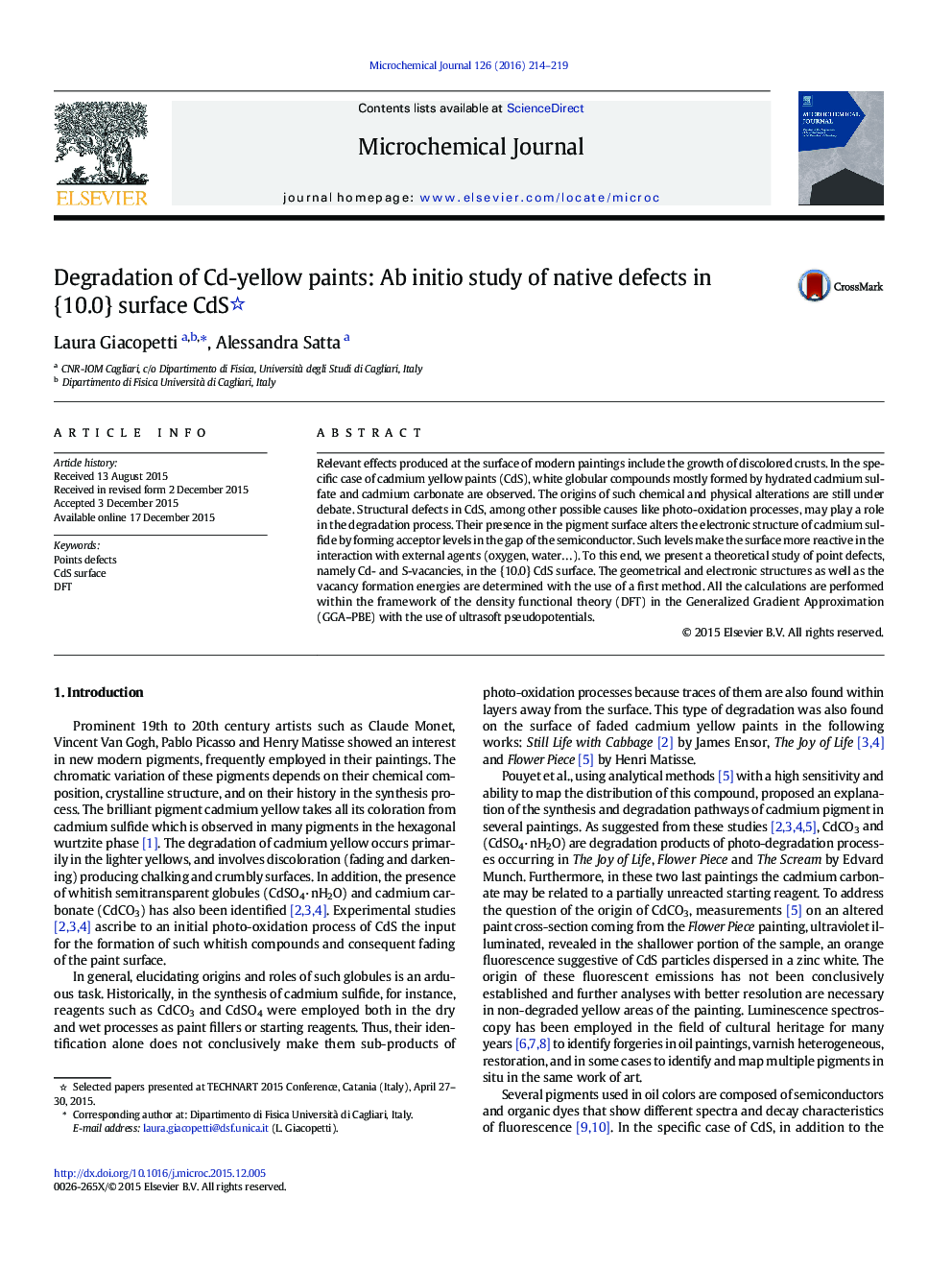| Article ID | Journal | Published Year | Pages | File Type |
|---|---|---|---|---|
| 7641473 | Microchemical Journal | 2016 | 6 Pages |
Abstract
Relevant effects produced at the surface of modern paintings include the growth of discolored crusts. In the specific case of cadmium yellow paints (CdS), white globular compounds mostly formed by hydrated cadmium sulfate and cadmium carbonate are observed. The origins of such chemical and physical alterations are still under debate. Structural defects in CdS, among other possible causes like photo-oxidation processes, may play a role in the degradation process. Their presence in the pigment surface alters the electronic structure of cadmium sulfide by forming acceptor levels in the gap of the semiconductor. Such levels make the surface more reactive in the interaction with external agents (oxygen, waterâ¦). To this end, we present a theoretical study of point defects, namely Cd- and S-vacancies, in the {10.0} CdS surface. The geometrical and electronic structures as well as the vacancy formation energies are determined with the use of a first method. All the calculations are performed within the framework of the density functional theory (DFT) in the Generalized Gradient Approximation (GGA-PBE) with the use of ultrasoft pseudopotentials.
Keywords
Related Topics
Physical Sciences and Engineering
Chemistry
Analytical Chemistry
Authors
Laura Giacopetti, Alessandra Satta,
